► Uses Hyundai’s e-GMP platform
► Longer than the Ioniq 5
► As slippery as it looks
Both Hyundai and Kia have produced some weird and wonderful electric cars over the last few years, but the Ioniq 6 must be the most unusual of the lot. Although it follows on the from the angular, DeLorean-influenced Ioniq 5, the Ioniq 6 goes a completely different direction. Based on Hyundai’s Prophecy concept, which itself was a sci-fi interpretation of the Porsche 911, the Ioniq 6 looks like a collaboration between Stingray, Saab and Stuttgart.
Underneath it uses the same impressive e-GMP skateboard as the Ioniq 5 but stretches it lower and longer to make something that promises to be both more dynamic and luxurious. So, does it succeed? Keep reading to find out and check our page on the forthcoming Ioniq 6 N if you want this car – but faster.
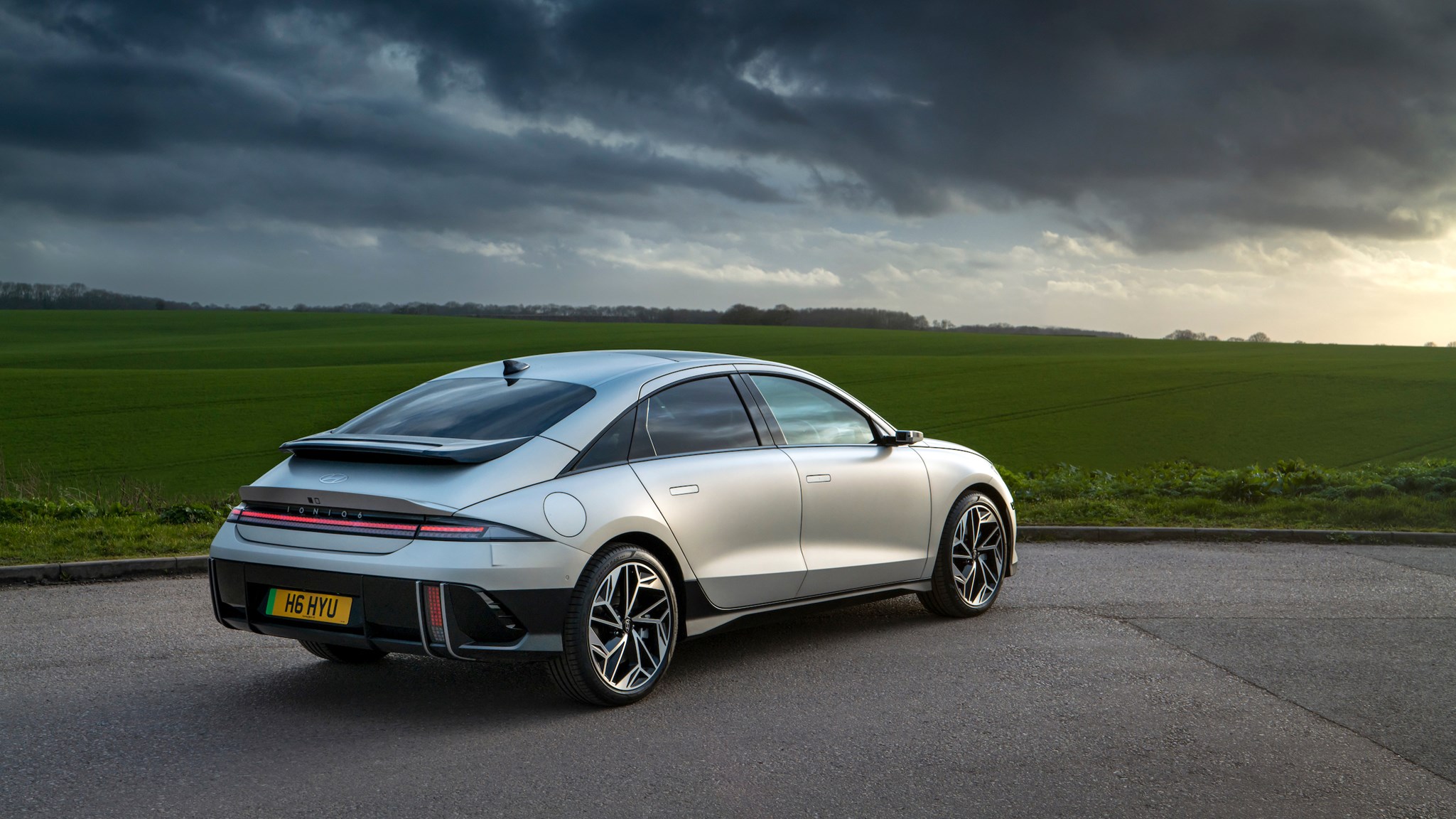
At a glance
Pros: Looks fantastic, refined ride, powertrain works well
Cons: High seating, poor boot space, relatively little feedback from the wheel
What’s new?
Ioniq 6 gets the same e-GMP platform used by the Ioniq 5 and Kia EV6 among others – but puts it to work in a futuristic saloon. That’s a good start, and means you get 350kW charging, as well as 800volt and V2L tech.
The 6 measures 2950mm between its axles – 50mm less than the Ioniq 5 – but its overall length of 4855mm makes the electric streamliner a significant 220mm longer. That makes for a car with presence.
That odd styling isn’t just there to shock other road users either; the Ioniq 6’s teardrop shape gives it an impressively low drag coefficient of 0.21, That makes it one of the most aerodynamically efficient cars on sale, rivalling the slippery Mercedes EQS (0.20 Cd) and more brutal-looking Ioniq 5 (0.29 Cd).
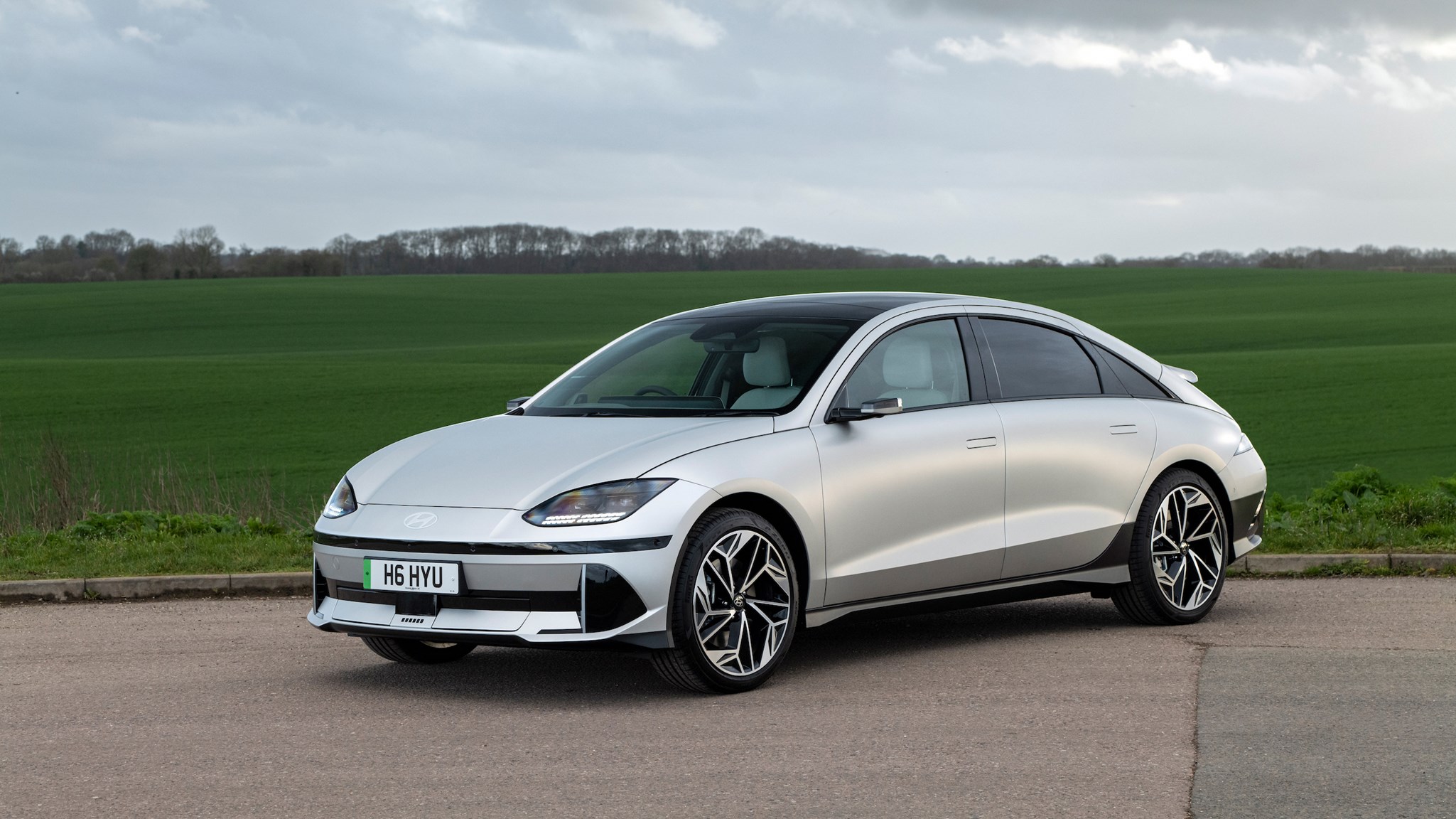
What are the specs?
All UK-spec 6 EVs come with the long-range 77.4kWh battery and 20-inch alloys, with a choice of rear- or all-wheel drive. While some markets get a small battery 53kWh rear-wheel drive model with a meagre 149bhp, there’s a minimum of 225bhp in the UK.
The rear-wheel-drive model will go from 0-62mph in 7.4 seconds before a top speed of 115mph, and it makes a total of 225bhp and 258lb ft. All-wheel drive increases power to 321bhp and 446lb ft thanks to an extra electric motor on the front axle. That gets you a 0-62mph sprint of 5.1sec, but the same limited top speed of 115mph.
Charging is super quick when do you run out of juice, though. The Hyundai gets 350kW capability, which will do a 10-80 per cent top-up in 18 minutes. That’s provided you can find an available, functioning charger, of course.
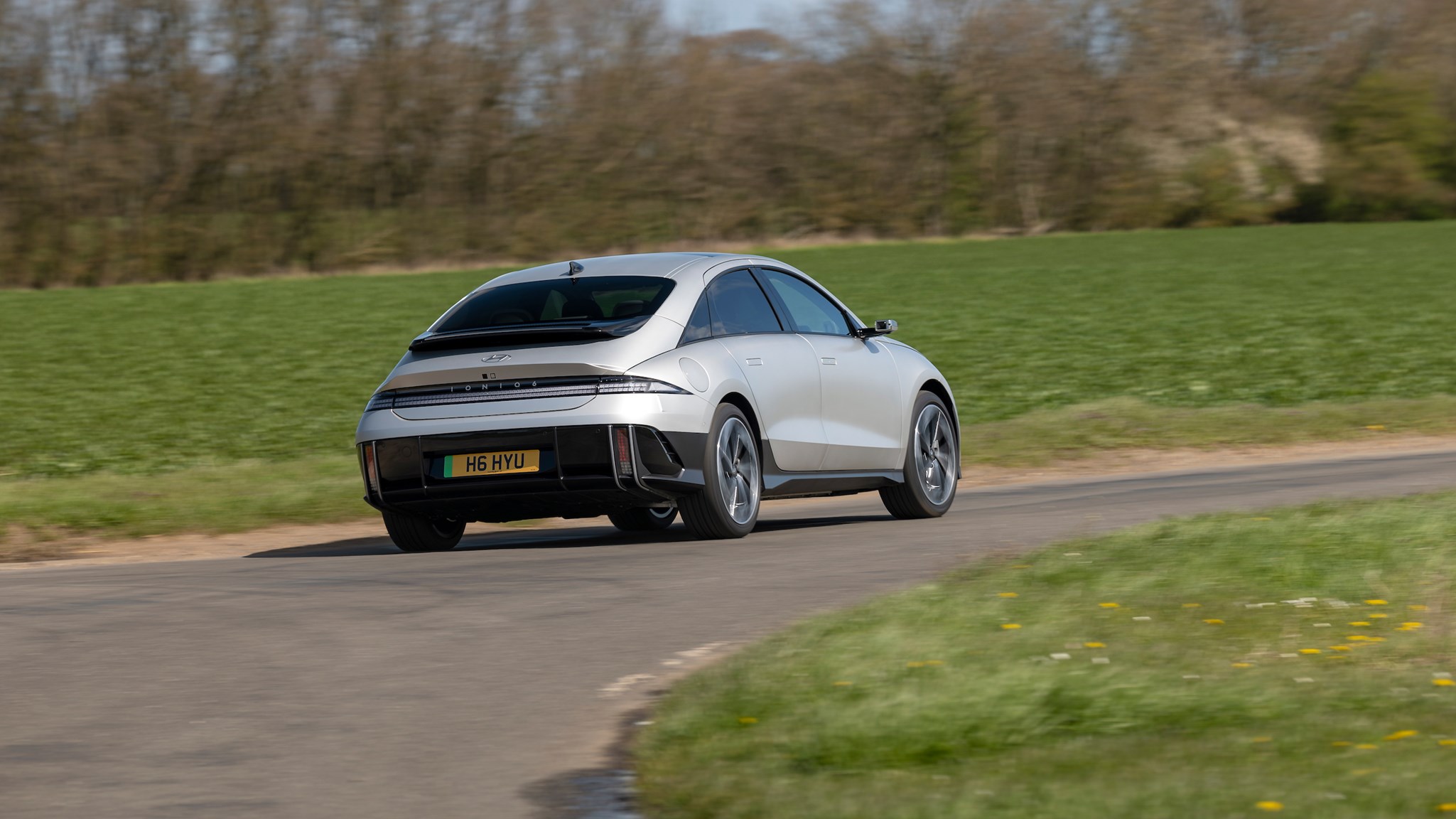
What’s it like to drive?
To sum up driving the Ioniq 6 it’s almost worth dividing it into two parts – the powertrain and then the controls and ride. The former is impressive as you’d expect: Hyundai and Kia do a fine job integrating EV powertrains, so the way power and regen behaves feels organic and natural.
It’s customisable too, so you can play around with that in different drive settings (Eco, Normal and very sparky Sport) and by adjusting the force of the re-gen on the knobbly-backed, metallic ‘gearshift’ paddles fixed to the steering wheel.
However, the looks of the Ioniq 6 convey a very different driving experience to the one the Hyundai delivers. Firstly, you sit high in the cabin thanks to the skateboard battery, and it immediately makes the car feel more comfortable than ‘locked-in’ and sporty. It’s fine after a while, but for the first few miles I felt as though I was sitting on, not in the Ioniq 6.
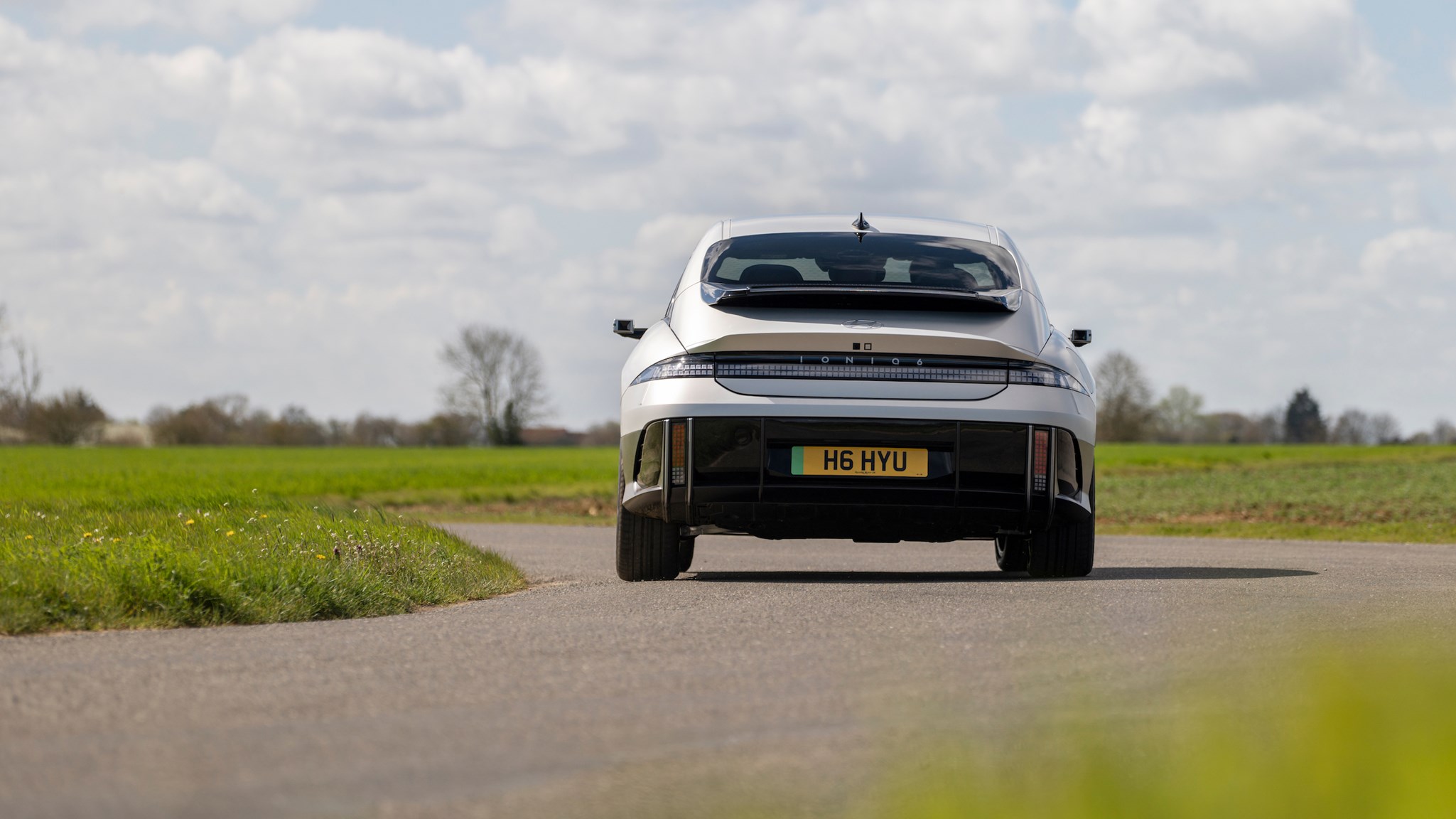
The steering, while heavy, feels incredibly precise, and after a few turns it becomes clear as to why. The Ioniq 6 feels long and having super-accurate steering makes it easier to manoeuvre through traffic and sharp bends. It eventually becomes second nature, and the entire process is all helped by cameras which will show you the sides of the car when turning.
The Ioniq 6’s length and height really do move it towards the executive end of the spectrum. Still, there is performance: grip is strong even on a streaming wet day, while well-judged electronic assistants do a great job of maintaining traction.
You can get into a satisfying rhythm on a B-road, although it’s not as much fun as a Tesla Model 3. No doubt we’ll have to wait for Hyundai’s N division for a truly entertaining drive.
What about the interior?
Overall, the Ioniq 6’s cabin looks smart and modern with its twin 12-inch screens (one the touchscreen, the other the digital instrument binnacle in front of you) plus gloss-black trim, and a mix of capacitive and aluminium-look buttons.
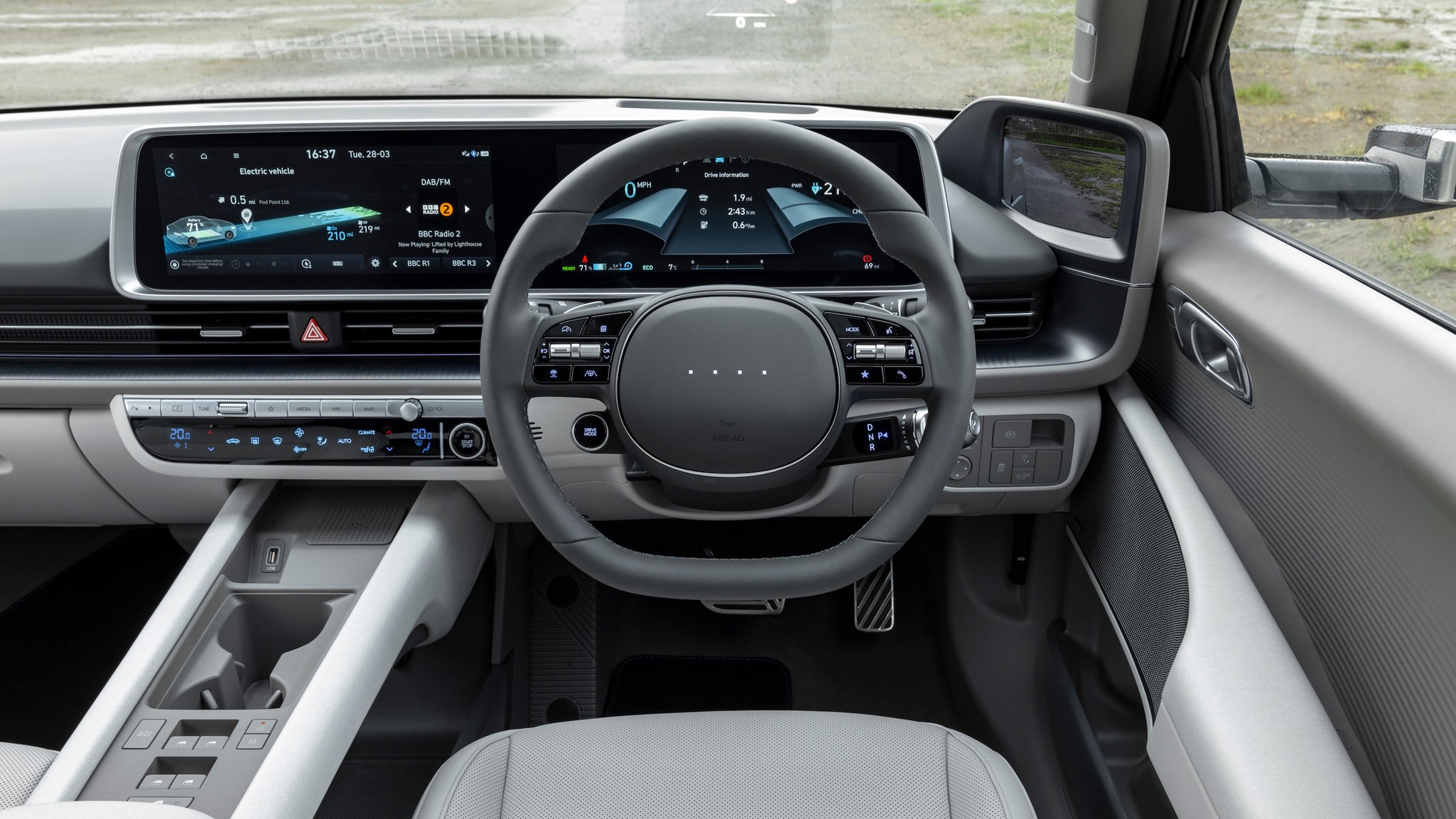
Seating position aside, it nails the futuristic, airy cabin look. The seats are comfy enough, and despite the high seating there’s still plenty of headroom for six footers. There’s also more storage space, charging ports and cubbies than you’ll know what to do with. You’ll also find wireless Apple CarPlay and Android Auto, along with adaptive cruise, lane-keeping assist and all the other ADAS bits and pieces you’d expect.
Space in the back is good too, with a flat floor and that decent wheelbase making for a good amount of space for rear passengers. A pity then, that the Ioniq 6’s swept back roofline does reduce the amount of headroom for those at the back.
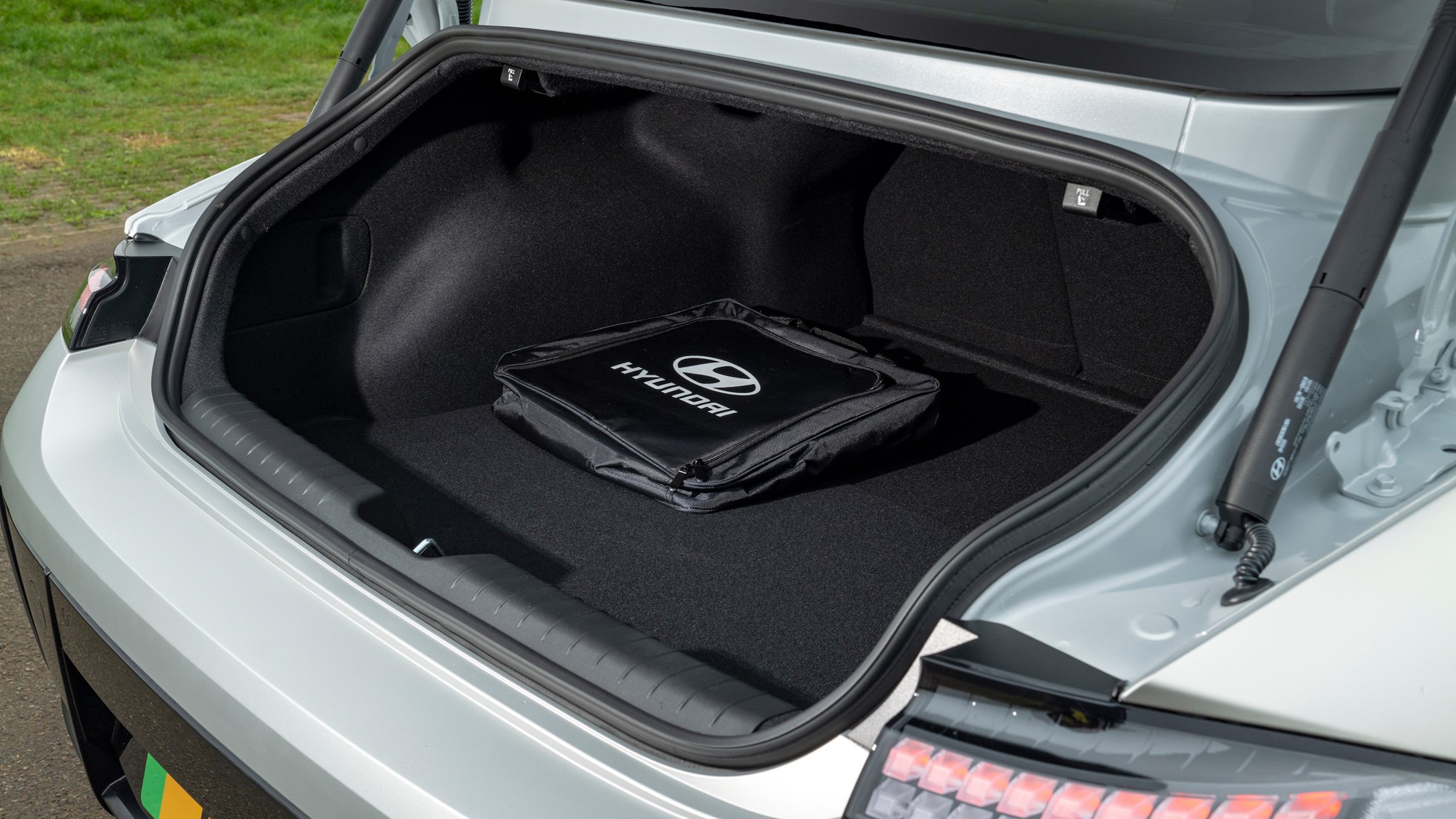
The Ioniq 6 boot space is generous enough, but the shape of the Hyundai’s aggressively swept bodyworkmeans it isn’t as practical as some rivals. We measured a depth of 108cm and 105cm wide. The rear seats split 60:40 via some handy boot-mounted levers and the bootlid is powered. Up front, the ‘frunk’ under the bonnet is tiny and only suitable for charging cables.
Before you buy?
The Ioniq 6 puts itself against a tough crowd. The Tesla Model 3 Long Range offers more performance with a similar range, while the Polestar 2 offers better handling with a reduction in range. And then there’s the BMW i4, which has the Ioniq 6 beat but for a much higher asking price.
Of the two Ioniq 6 trims on offer, we’d be tempted to go for the rear-wheel drive model, as the extra range more than makes up for the increased performance. And besides, as sporty as it looks, the Ioniq 6 is more about long, comfortable journeys than short, spirited ones.
Looking closer to home, the Ioniq 6 also gets stiff competition from the Ioniq 5, which has more of a wow factor than the 6, in an arguably more practical shape. Then there’s the upcoming Ioniq 6 N, which will take the same powertrain as the Ioniq 5 N, and package it in the 6’s streamlined – arguably more suitable – package.
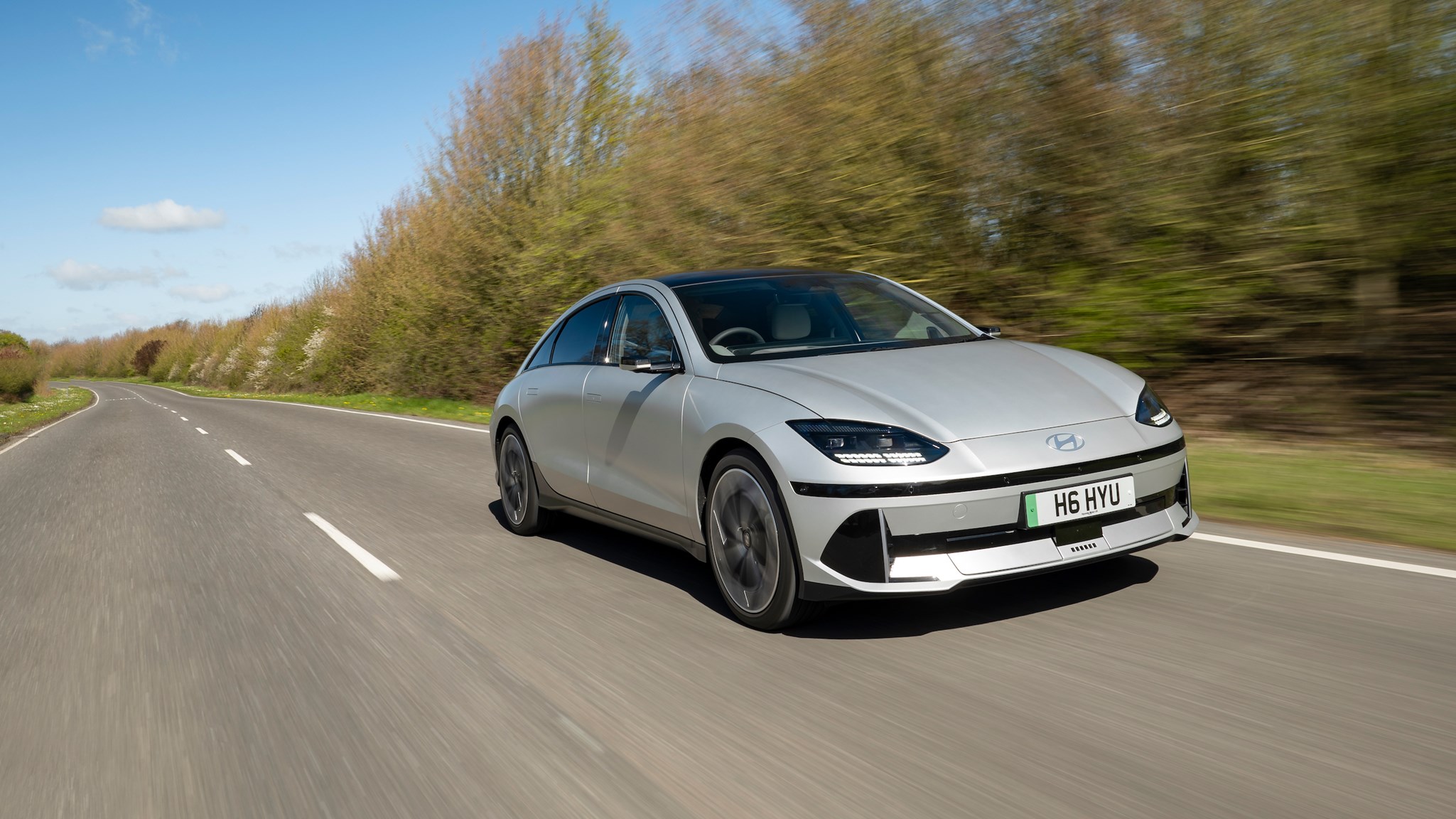
Verdict
In a world of electric SUVs and crossovers the Ioniq 6 is a breath of fresh air. It looks different to other cars – even other Hyundais – and its powertrain means it’s got enough range and performance too.
It doesn’t deliver the driving experience you’d expect, being both higher and longer than it looks, but it’s by no means disappointing. Think semi-luxurious limousine rather than sporty-four door and you’re pretty much there.
In all, there’s much to like in the Hyundai Ioniq 6, including a spacious and relaxing cabin, well integrated EV powertrain and the nice balance between rolling refinement and handling dexterity.
More Hyundai reviews
Specs are for a Hyundai Ioniq 6 Long Range AWD